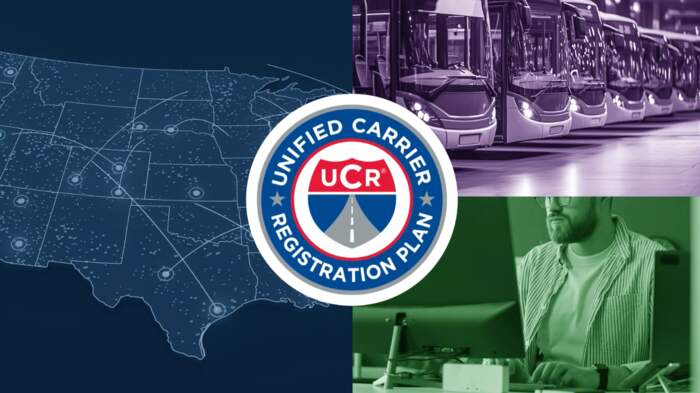Understanding regulatory obligations is essential for trucking companies operating across state lines in the United States. One of the key compliance requirements is the Unified Carrier Registration (UCR), a federally mandated program that ensures commercial motor carriers, freight forwarders, leasing companies, and brokers contribute fairly to funding safety programs. Completing the UCR registration may seem straightforward, but missing a step or misunderstanding the requirements can lead to operational penalties and disruptions.
We will explore how trucking companies can confidently navigate the UCR process from start to finish, ensuring they remain compliant and operational throughout the year. Whether you’re starting a new company or updating your existing registration, this guide breaks it down in a way that’s accessible, actionable, and relevant to current industry standards. Those looking to learn about Unified Carrier Registration will find clear steps and practical advice throughout this guide. By following this path, carriers can maintain uninterrupted service and avoid non-compliance risks.
How to Complete UCR Registration Efficiently
1. Understand Who Must Register Under UCR
Before starting the UCR registration process, it’s essential to determine if your company qualifies under the Unified Carrier Registration system. The UCR applies to all individuals or companies that operate commercial motor vehicles in interstate or international commerce. This includes for-hire carriers, private motor carriers, freight forwarders, leasing companies, and brokers. Even if you do not own trucks but act as a broker or leasing agent involved in transporting goods across state lines, you are still required to register.
The key distinction is the engagement in interstate commerce. If your vehicles cross state boundaries or if you arrange transport across states, the UCR applies. Companies operating exclusively within a single state do not need to register unless that state has adopted an intrastate UCR requirement. The UCR registration is also based on the number of commercial motor vehicles you operate, not the total fleet. Companies should confirm eligibility annually and note any changes in operations that might affect their status.
2. Calculate the Number of Vehicles for UCR Fee
Once eligibility is confirmed, the next step involves determining the number of commercial vehicles in your fleet. The UCR fee is based on a tiered system, meaning that companies pay based on how many vehicles they operate in interstate commerce. The categories range from zero vehicles (for brokers and freight forwarders) to fleets with over 1,000 vehicles. It’s important to note that only power units such as trucks and tractors are counted, not trailers. To accurately report, use the number from your most recent Motor Carrier Identification Report (MCS-150), which should be updated before UCR registration.
Providing an accurate vehicle count is crucial for paying the correct fee and staying in compliance with federal requirements. Overreporting can lead to unnecessary expenses, while underreporting may trigger audits and penalties. Many states use roadside inspection and audit data to verify registration accuracy, so honesty and precision at this stage are essential.
3. Gather Required Information and Documents
Having all required documentation on hand before logging into the UCR portal will make the process smoother. Key information includes your USDOT number, company name, address, and the number of commercial motor vehicles in your fleet. You may also need an Employer Identification Number (EIN) or Tax Identification Number (TIN). If you are a broker or freight forwarder, your MC number should also be available.
Ensure your company’s MCS-150 is current, as the data on file with the Federal Motor Carrier Safety Administration (FMCSA) will be referenced during UCR verification. Some states may request additional identifiers, such as a state-issued account or tax number. Keeping this information organized ahead of time helps reduce the risk of errors or delays in processing. If your registration is incomplete or contains discrepancies, it could lead to compliance warnings or delays in getting your operation approved for the year.
4. Complete Your UCR Registration Online
The most efficient way to complete UCR registration is through the official UCR National Registration System portal. The website is accessible to all carriers and provides a streamlined data entry and payment processing platform. Start by entering your USDOT number, which will automatically pull relevant company information from FMCSA databases. Verify that the details are correct and make any necessary updates. Once your information is confirmed, proceed to select your UCR base state.
This is usually the state where your business is headquartered or where you have the most significant presence. Next, input the number of vehicles in your fleet per your MCS-150 form. The system will calculate your fee accordingly. Payment is usually made via credit card or ACH bank transfer, and a receipt is generated upon successful completion. Some third-party agencies offer to handle UCR filings, but direct registration is cost-effective and provides immediate confirmation of compliance.
Completing the Unified Carrier Registration is more than a yearly task—it’s critical to operating a legal and compliant trucking business. With accurate information, clear documentation, and timely submission, companies can avoid costly operating penalties and interruptions. When followed diligently, these steps help build a more efficient and secure transportation operation. For companies navigating a complex web of state and federal requirements, staying proactive about registration deadlines and recordkeeping makes all the difference. With a clear and structured approach, the UCR process becomes less of a burden and more of a dependable routine in your compliance calendar.


